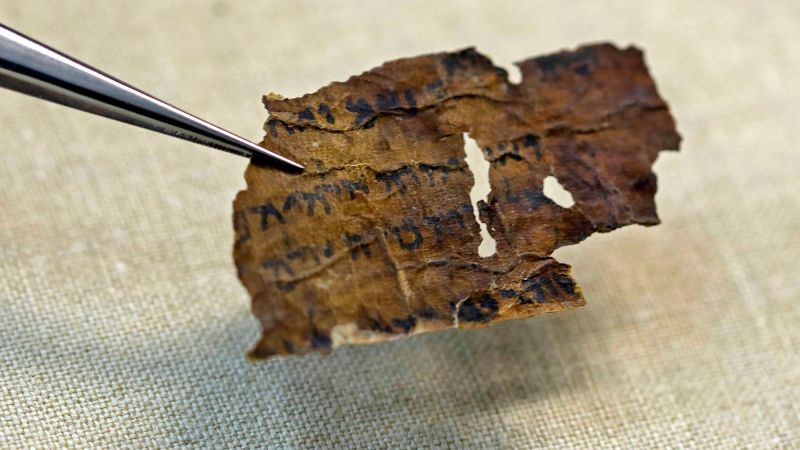The Dead Sea Scrolls, often heralded as one of history’s monumental archaeological discoveries, continue to captivate scholars and the public alike. A new study reveals that these ancient manuscripts are potentially much older than previously believed, suggesting that some fragments may date back about 2,300 years. Mladen Popović, the lead author of this groundbreaking report published in the journal PLOS One, emphasized that this fresh analysis utilizes radiocarbon dating combined with artificial intelligence to make these determinations, offering insight into when their presumed authors were alive.
The initial discovery of the Dead Sea Scrolls took place in 1947 when Bedouin shepherds stumbled upon these ancient texts in the Judaean Desert, near the Dead Sea. Archaeological endeavors subsequently unearthed thousands of fragments from eleven caves around Khirbat Qumran, located in present-day West Bank. The significance of these scrolls cannot be overstated, as they drastically altered historical perspectives regarding ancient Judaism and early Christianity. Popović notes that among roughly 1,000 manuscripts retrieved, more than 200 include biblical Old Testament texts, marking them as the oldest copies of the Hebrew Bible known to date.
Popović, who also serves as the Dean of the Faculty of Religion, Culture, and Society at the University of Groningen in the Netherlands, remarked on the scrolls’ role as a “time machine.” He explained that they provide tangible evidence of cultural and historical thought processes during a pivotal era, instrumental for understanding Abrahamic religions—be they Christian, Jewish, or secular—given the Bible’s profound impact on world history.
Traditionally, the dating of these manuscripts relied on paleography—the study and analysis of ancient writing. Many scholars had estimated their creation between the third century BCE and the second century CE. However, the study led by Popović indicates a possibility of some manuscripts being as old as the late fourth century BCE, suggesting they could predate earlier assumptions by up to a century. This revelation opens new avenues to explore how these texts were circulated and disseminated beyond their original authorship.
The potential impacts of these findings extend beyond just adjusting dates. They may catalyze further scholarly investigations and redefine historical interpretations. Past estimates regarding the scrolls’ ages largely stemmed from radiocarbon dating performed in the 1990s, a technique refined by chemist Willard Libby in the late 1940s. Unfortunately, previous analyses faced challenges, such as contamination from modern substances like castor oil—used historically to enhance text legibility—which could result in misleading dates.
In this recent study, Popović and his team employed contemporary radiocarbon dating techniques on thirty manuscripts, most of which proved to be older than prior assessments, while only two were determined to be younger. Moreover, they harnessed high-resolution images of these manuscripts to train an artificial intelligence system dubbed Enoch, named after a Biblical figure. Remarkably, Enoch demonstrated an impressive accuracy of 85% in estimating the ages of features based on documents withheld from the dating process, even providing narrower date ranges compared to carbon dating results.
New dating results revealed that several manuscripts were indeed between 50 to 100 years older than previously thought. For instance, a scroll from the Book of Daniel, once assigned a second-century BCE date, now confidently aligns with the original author’s timeframe due to rerouted carbon dating methods.
Despite the promising results of AI application in this field, experts maintain a cautious stance. Many believe that while AI contributes interesting insights into dating methods, it should augment rather than entirely replace traditional carbon dating. Charle Hempel, a professor of Hebrew Bible at the University of Birmingham, expressed hope that the collaboration between enhanced methods might open doors to even clearer dating possibilities.
Ultimately, this innovative merging of traditional and modern scientific methods could redefine our understanding of the Dead Sea Scrolls, offering profound implications for biblical scholarship and historical reconstruction. The advancement represented by this study signals a hopeful and transformative future for the analysis of ancient manuscripts, with immense scholarly potential awaiting exploration.



